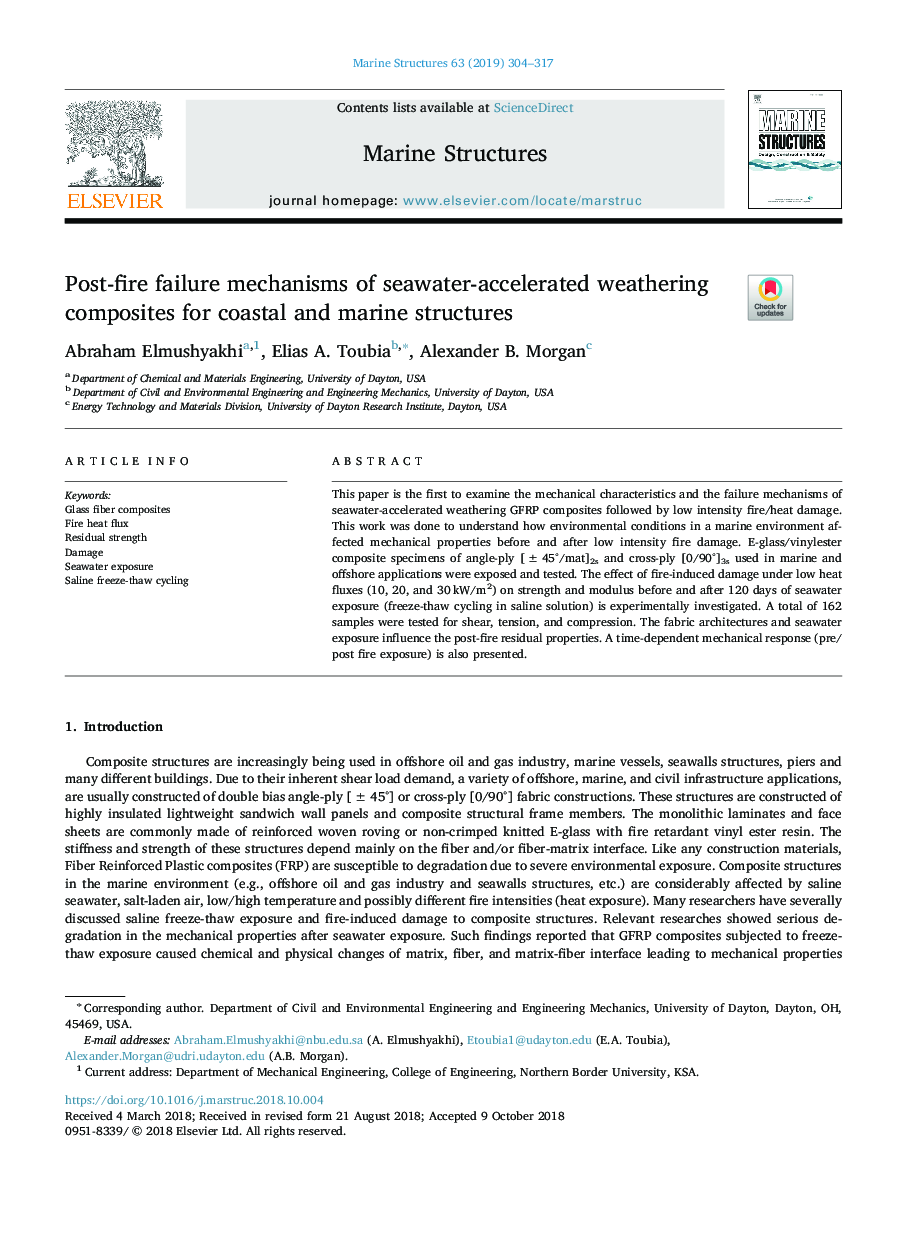| Article ID | Journal | Published Year | Pages | File Type |
|---|---|---|---|---|
| 11263443 | Marine Structures | 2019 | 14 Pages |
Abstract
This paper is the first to examine the mechanical characteristics and the failure mechanisms of seawater-accelerated weathering GFRP composites followed by low intensity fire/heat damage. This work was done to understand how environmental conditions in a marine environment affected mechanical properties before and after low intensity fire damage. E-glass/vinylester composite specimens of angle-ply [±45°/mat]2s and cross-ply [0/90°]3s used in marine and offshore applications were exposed and tested. The effect of fire-induced damage under low heat fluxes (10, 20, and 30â¯kW/m2) on strength and modulus before and after 120 days of seawater exposure (freeze-thaw cycling in saline solution) is experimentally investigated. A total of 162 samples were tested for shear, tension, and compression. The fabric architectures and seawater exposure influence the post-fire residual properties. A time-dependent mechanical response (pre/post fire exposure) is also presented.
Related Topics
Physical Sciences and Engineering
Engineering
Civil and Structural Engineering
Authors
Abraham Elmushyakhi, Elias A. Toubia, Alexander B. Morgan,
